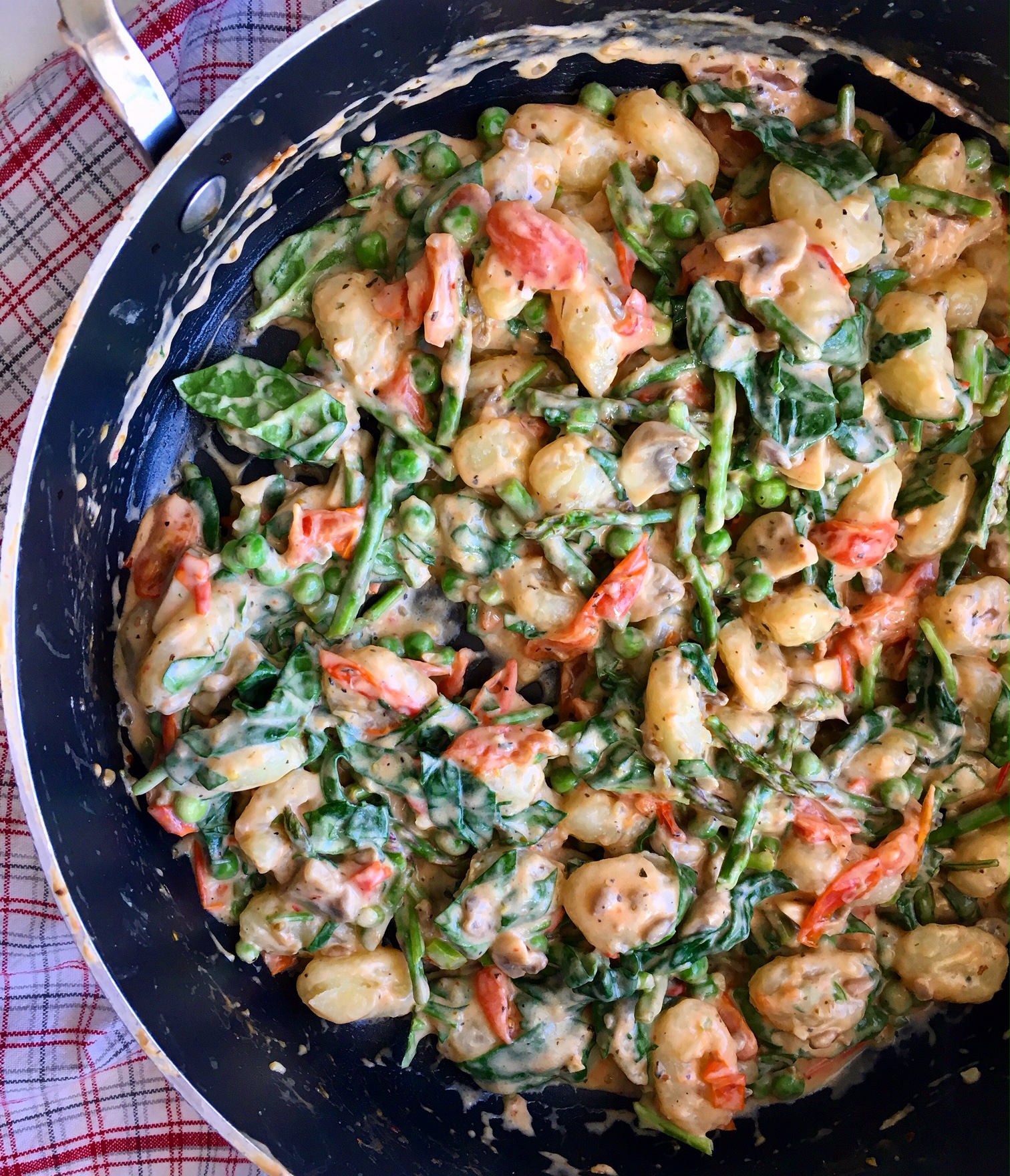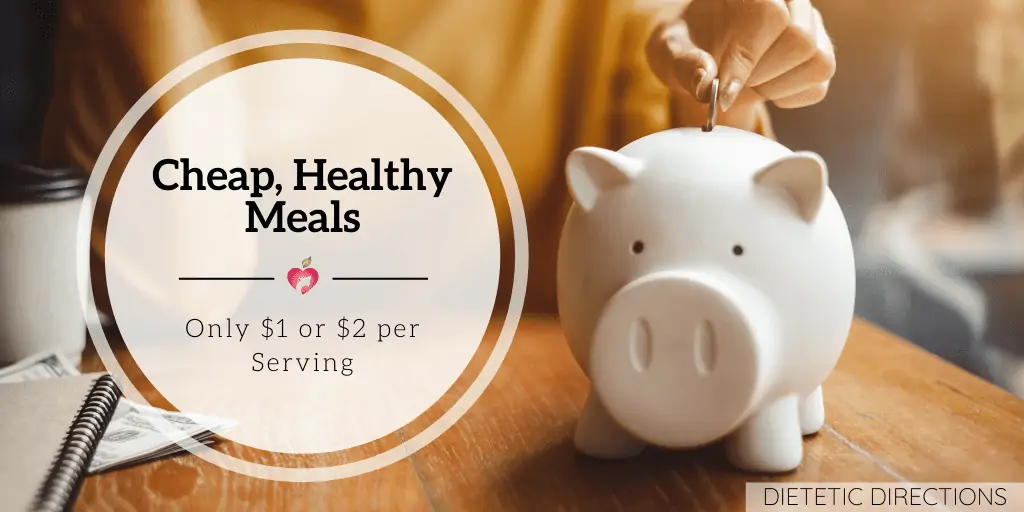
Cheap and Healthy Meals
~Only $1 or $2 per Serving~
We are all watching our dollars more closely than ever. The ongoing COVID-19 pandemic has caused tremendous financial loss and hardship. However, even on a restricted budget, we still have to eat, and ideally eat wholesome, nourishing foods. The good news: stretching our food dollar can be done with inexpensive ingredients that create cheap, healthy meals. In today’s blog, I will share $1 or $2 a serving meals, using five budget-friendly foods. These creations utilize lentils, Ontario milk, potatoes, eggs and canned tomatoes. I love these foods, always have them in the kitchen and find them super versatile. So let’s get saving!

This post was sponsored by Dairy Farmers of Ontario, as always, all opinions are genuine.
If you are setting a food budget, it’s important know which items generally cost more or are most prone to inflation – namely fresh vegetables, fruit, meat and seafood. Hopefully policy change can keep/make these wholesome foods more affordable. Nevertheless, for now, this could mean only buying the above inflation-prone, healthy items during sales, in bulk purchases (& freezing), or utilizing frozen or canned alternatives to save. Additionally, it’s imperative to know how much you’re spending (on both grocery purchases and restaurant/take-out). Subsequently, this allows you to see where extra costs are adding up (often unknowingly).

What to Buy & and Make for Cheap and Healthy Meals
1. Lentils
I absolutely LOVE lentils. They are budget-friendly, tiny edible seeds grown in a pod. Lentils vary in size, shape and colour and generally have a mild, nutty flavour. Moreover, they are protein and fibre powerhouses and cooking time varies from around 15 minutes (red lentils) to 45 minute for green lentils. However, the quickest prep alternative is using canned lentils, which are one of my top pantry staples (click here to see my top fridge, freezer and pantry items I stock up on)!
Budget-Friendly:
You can buy lentils dry ($3.99 for an 1.8 kg bag) or a can (540 mL) for approximately $1.50. Of course, dry lentils are cheapest but involve extra prep. I have both at home and use canned lentils for quick meals or dry lentils for batches and future meals. Remember, buying canned beans is equally as nutritious as fresh. Just be sure to rinse canned lentils in a colander to remove excess salt. Importantly, if you’re concerned about some cans having BPA be sure to read here to learn more.
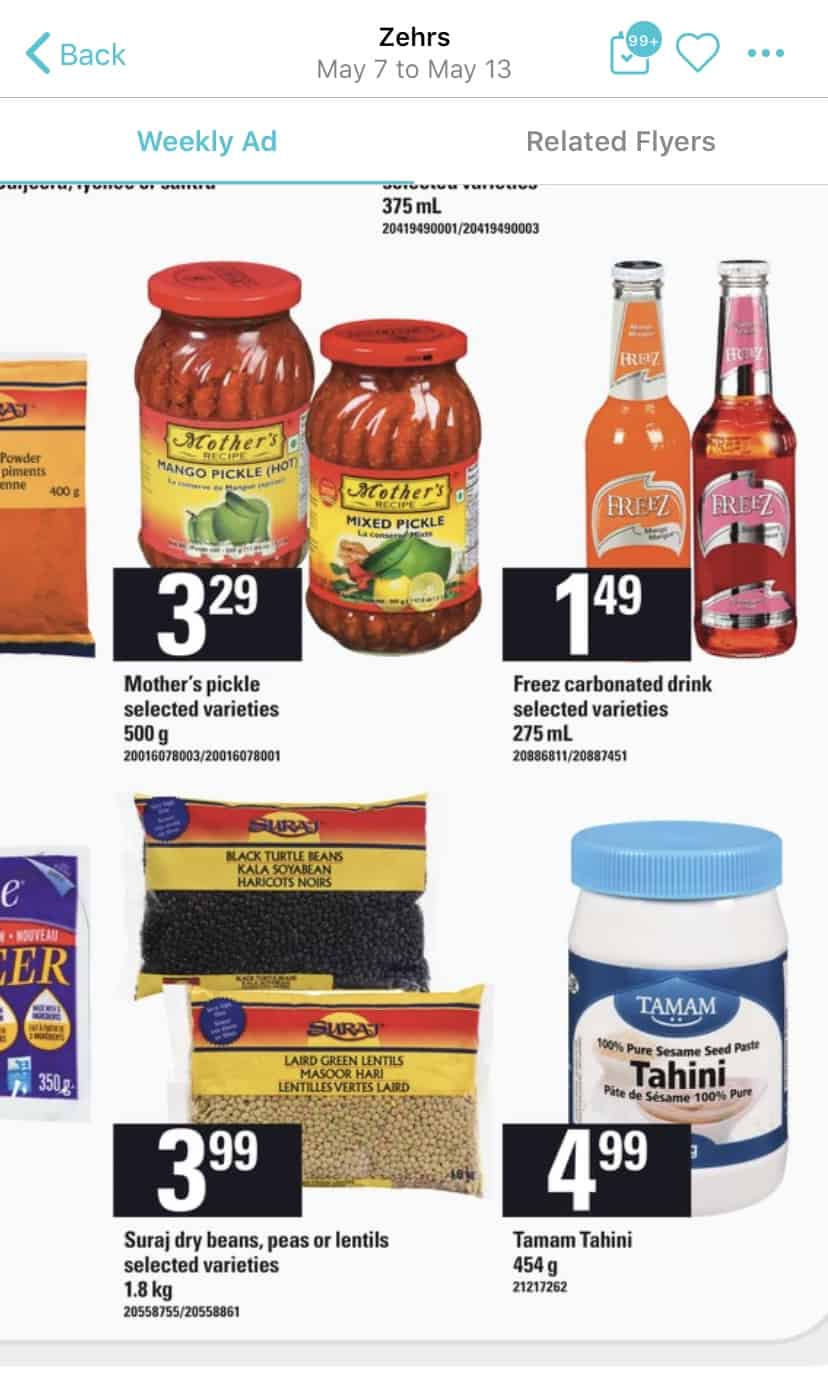
Cheap and Healthy Lentil Meals
Lentils can be consumed on their own, or added to soups, stews/chili, casseroles, Buddha Bowls or salads to boost nutrition. They are relatively easy to prepare and will nicely absorb the flavours of the dish. What’s more, they are available all year long and of course a top pick as a budget-friendly, nourishing pantry staple. Personally, I shop at Freshco for my groceries and estimate costs based on what I pay there.
Here are some cheap and healthy meals!
Easiest Greek Lentil Salad
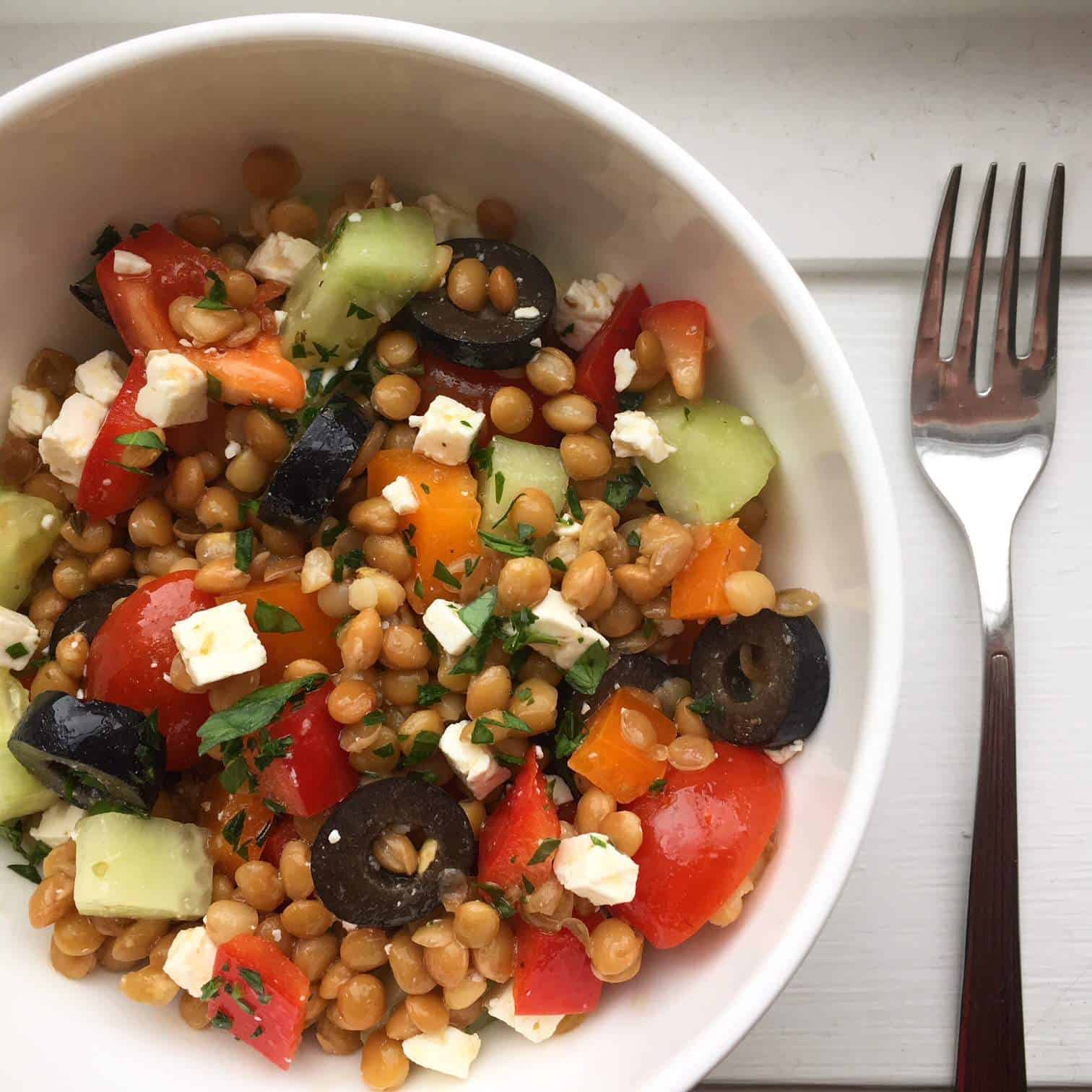
Lentil & Mushroom-Stuffed Shells with Italian Sausage

Savings TIP: If you’re a meat-eater, try mixing lentils with ground beef or sausage for sauces, tacos, chili or nachos. This doubles the yield, increases the fibre, magnesium and protein.
Garlicky Breakfast Lentils with Egg

Indian Dhal Soup

Garlic Lentil Bruschetta

Lentil & Kale Shakshouka
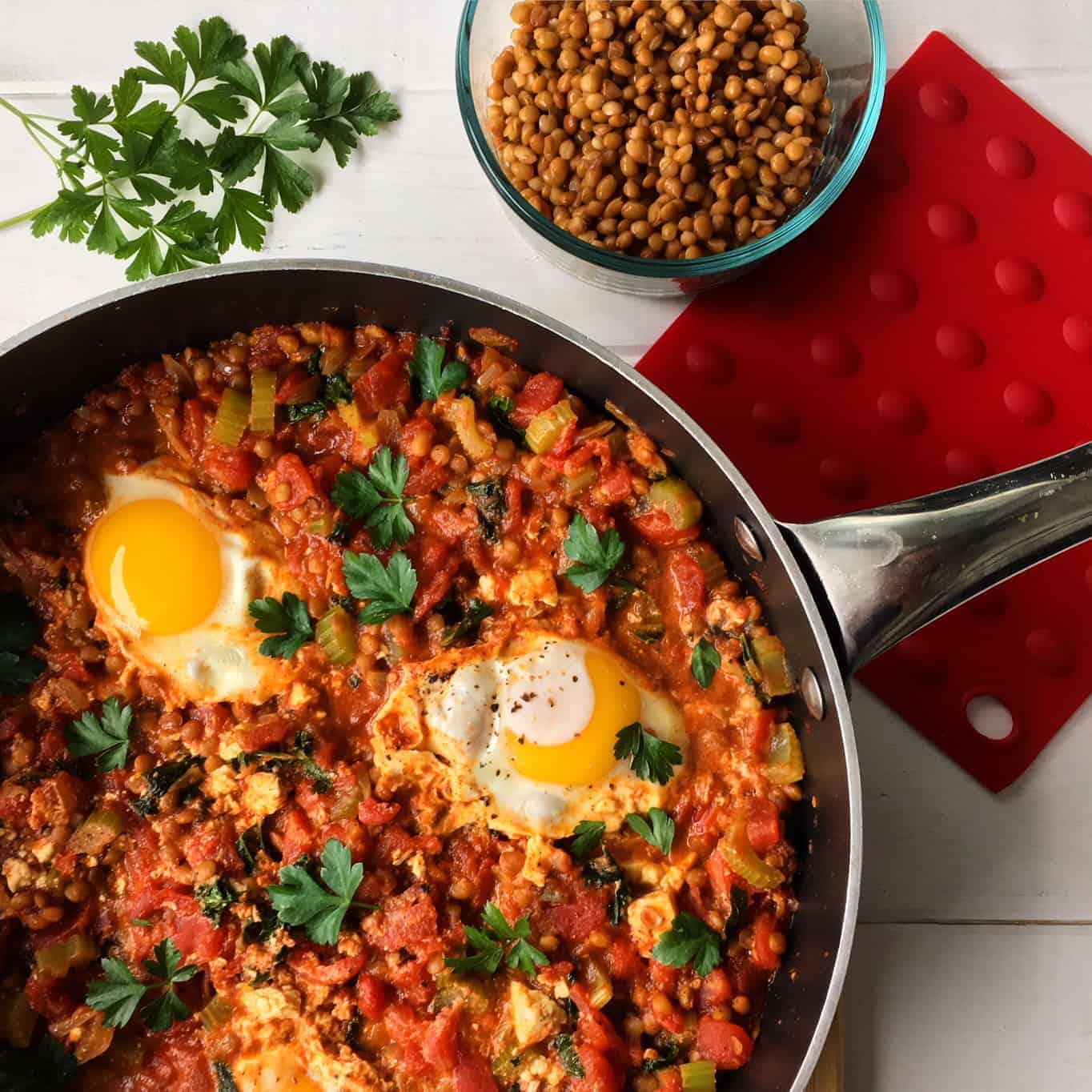
Why are Lentils Nutritious?
Think of lentils as little protein and fibre powerhouses. In fact, a small 1/2 cup of cooked lentils has 9 grams of protein and 8 grams of fibre. Nice! The type of fibre in lentils is mostly the cholesterol-lowering kind, namely soluble fibre. Therefore, lentil consumption is beneficial in the prevention of heart disease, lowering blood pressure, and helps with blood sugar control.
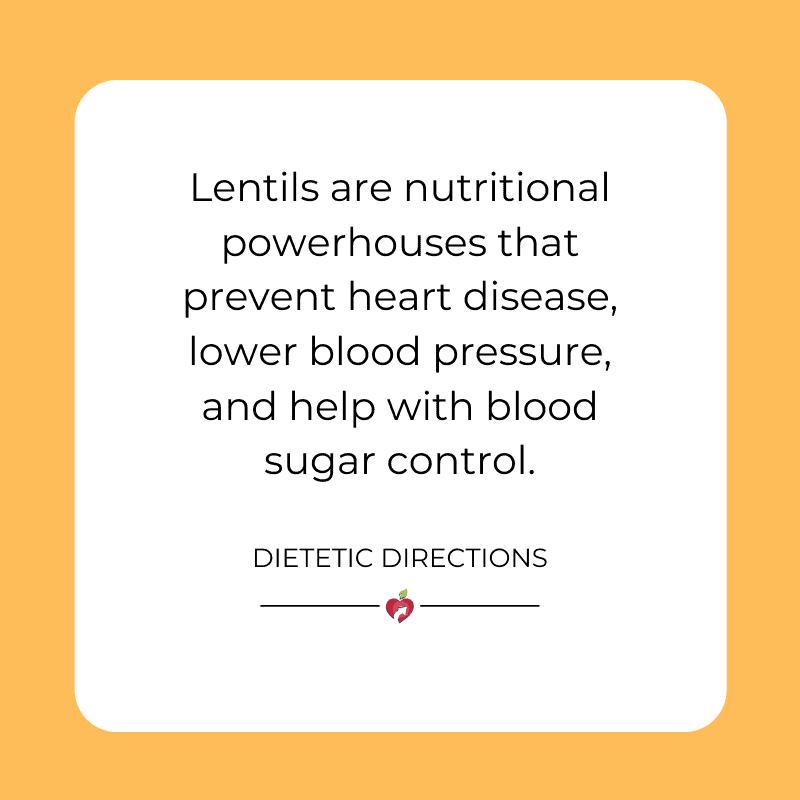
Lentils are low in calories (115 calories per ½ cup serving) and part of a cheap, healthy meal for getting a wide variety of nutrients. Interestingly, these little gems are one of the highest sources of folate (45% daily requirement in ½ cup serving), which is crucial for red blood cells formation, heart and nerve functioning. Furthermore, they are also packed with iron (19% Daily Value) and manganese (24% Daily value), both nutrients which are useful for bone and immune functioning. Additionally, we receive heart-healthy minerals potassium and magnesium which help relax the arteries.
DYK? Lentils are cheap, healthy, protein and fibre powerhouses! Check out 30 cheap, healthy meals for around $2 a serving. Share on X2. Ontario Milk
The main reason I plan a grocery trip during quarantine is to buy more milk. After all, I need to have milk in my morning latte and cereal; it’s nutritious, Canadian-quality, and oh-so-versatile for cooking, baking, or as part of a snack. Milk is also price regulated, which means it stays pretty consistent whether you’re shopping at the budget-grocery store ($4.50 for 4 litres of bagged milk) or the higher-end grocery store. It’s a cheaper alternative to buy milk in bags versus 2 Litre cartons ($3.99). Milk is also less pricey than the milk alternatives (almond, cashew, rice milk) which are around $3 per Litre.

Budget-Friendly:
When it comes to food budgeting, it is crucial to extend our dollar for maximum nutrition. Think of getting the most “nutrition bang for your buck.” We want to receive essential vitamins, minerals, nutrients, and protein from our food; not simply empty calories. What’s cool is that one cup of milk costs roughly $0.25 and is one of the most cost-effective sources of calcium out there. In fact, a cup of milk provides a third of our daily calcium. Interestingly, calcium is a mineral of concern for the average North American who often does not consume enough. If you buy more milk than you need, be sure to share it with a neighbour or freeze it. Milk can also be purchased as skim milk powder for an even cheaper alternative to bagged milk with the same nutritional value.

Cheap and Healthy Meals with Milk
Milk and milk products (yogurt and cheese) can be consumed on their own (I love a warm glass of milk before bed) or added to smoothies, cereal, coffee, cooking, or baking. Also, there’s no preparation needed for milk and it lasts for about three weeks in the fridge.
Coffee/Latte

Blueberry Coconut Chia Seed Pudding

Cobb Salad + Homemade Ranch Dressing
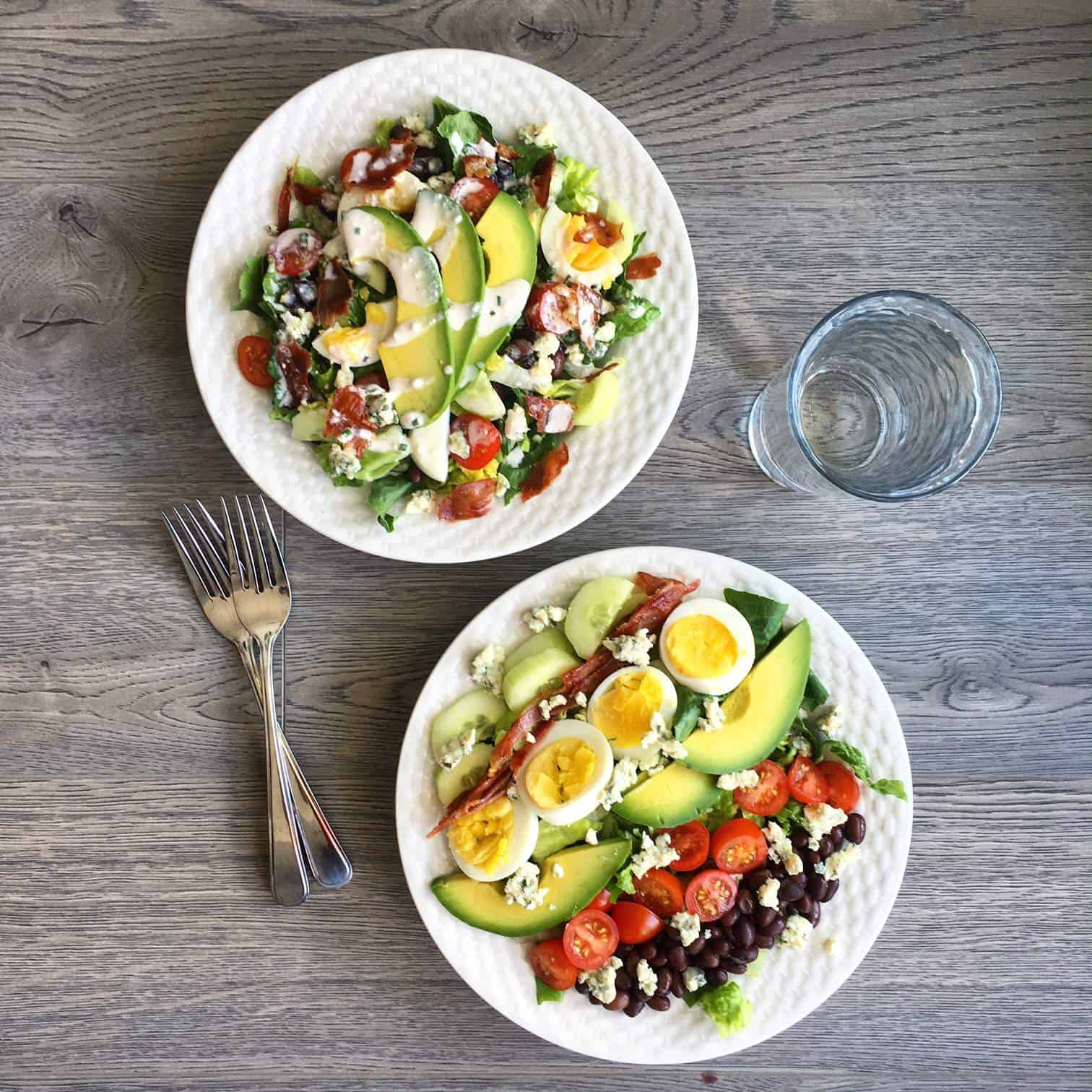
Strawberry Banana Smoothie Bowl

Pomegranate Cinnamon Overnight Oats
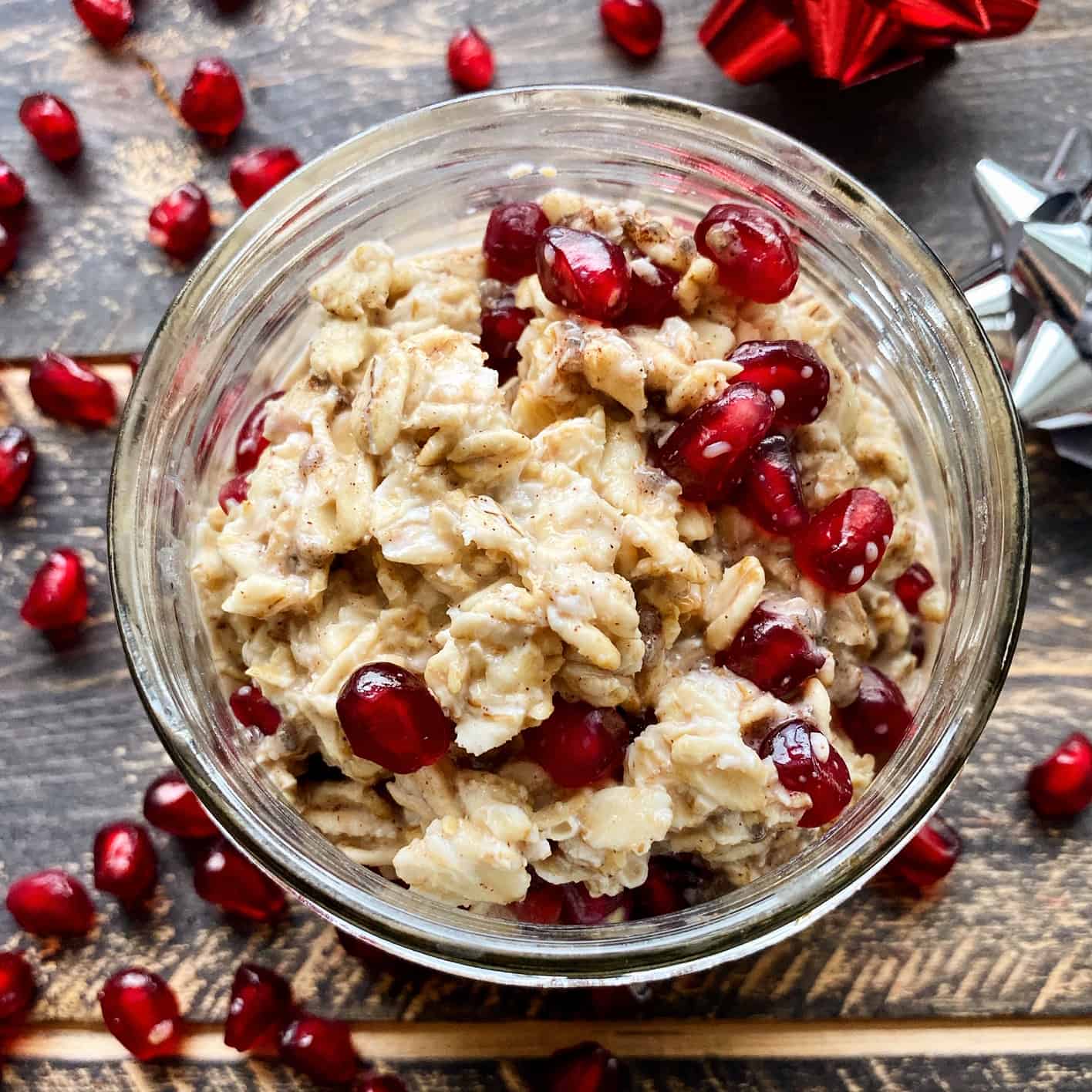
Veggie-Loaded Gnocchi in Tomato Cream Sauce
Why is Ontario Milk Nutritious?
Many think of calcium when it comes to milk. However, there’s more to it; milk contains an impressive eight grams of protein per cup and 15 essential nutrients such as magnesium, vitamin D and phosphorus. In fact, there is 100 IU of vitamin D in one cup of milk. Keep in mind the daily recommended amount for adults 19 to 70 years at 600 IU per day. Interestingly, data collected for the Canadian Health Measures Survey (CHMS) found that 75% of those who consumed milk once or more a day had levels of vitamin D above the cut-off. Vitamin D supports bone strength, decreasing the risk of fractures and may lower the risk of breast and colon cancer along with multiple sclerosis.

Milk in Ontario is 100% free of antibiotics and artificial growth hormones. For those with lactose intolerance or FODMAP digestive sensitivities opt for lactose-free options. Additionally, consider speaking with your dietitian if you do not know whether you are meeting your calcium requirements.
Click here for more examples of calcium-rich, bone-building foods.
Many do not know that approximately 95% of dairy farms are family-owned.

3. Potatoes
Who does not enjoy good ol’ Canadian potatoes? They’re cheap, versatile, and, you guessed it, nutritious! Now, potatoes have gotten a bad rep, especially the poor white potatoes. However, they are NOT bad for you. In fact, potatoes are actually GOOD for you – both white and sweet potato! They just differ in the types of nutrients, which accounts for the orange flesh in the beta-carotene-rich sweet potato. Or the high potassium (heart-healthy mineral) we receive in white potatoes, which is actually higher than a banana.
If you’re fearful of potatoes because they are a carbohydrate, read my post, In Defence of Carbs: Stop the Hating.
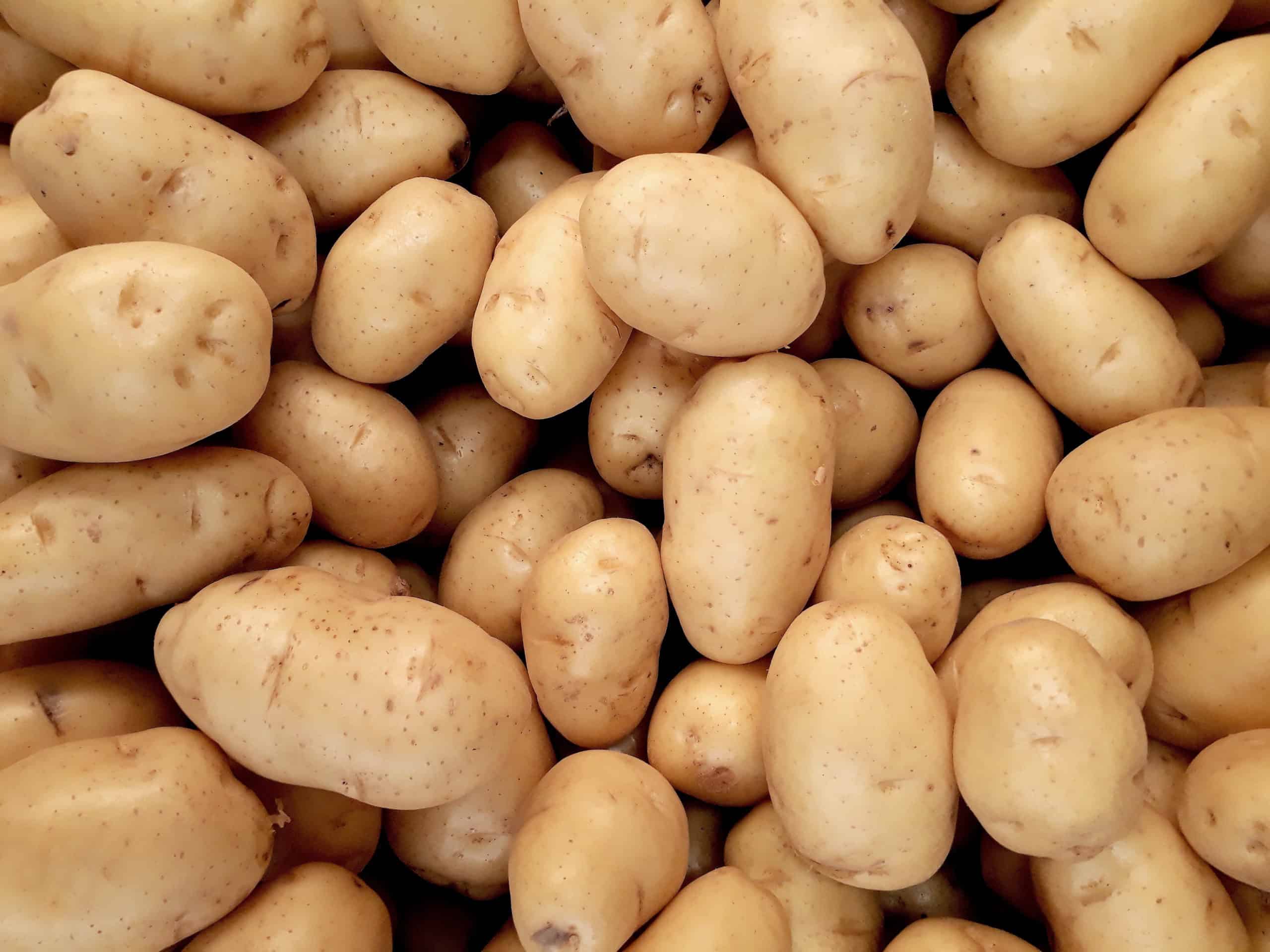
Budget-Friendly:
Buying pre-bagged potatoes is usually the best bang for your buck. For example, a 10-pound bag of potatoes (holds 12-15 potatoes) costs $3 at my neighbourhood No Frills (budget grocer). Be sure to check where your potatoes are coming from and support our local farmers whenever possible. Doing your homework before helps you know the best price. For example, when grocery shopping today the 10-pound bag of potatoes was $5.99 instead of $3 at a different grocery store. Price-match whenever possible for the lowest competitor price. It’s as easy as taking a screenshot of the competitor price (see below).
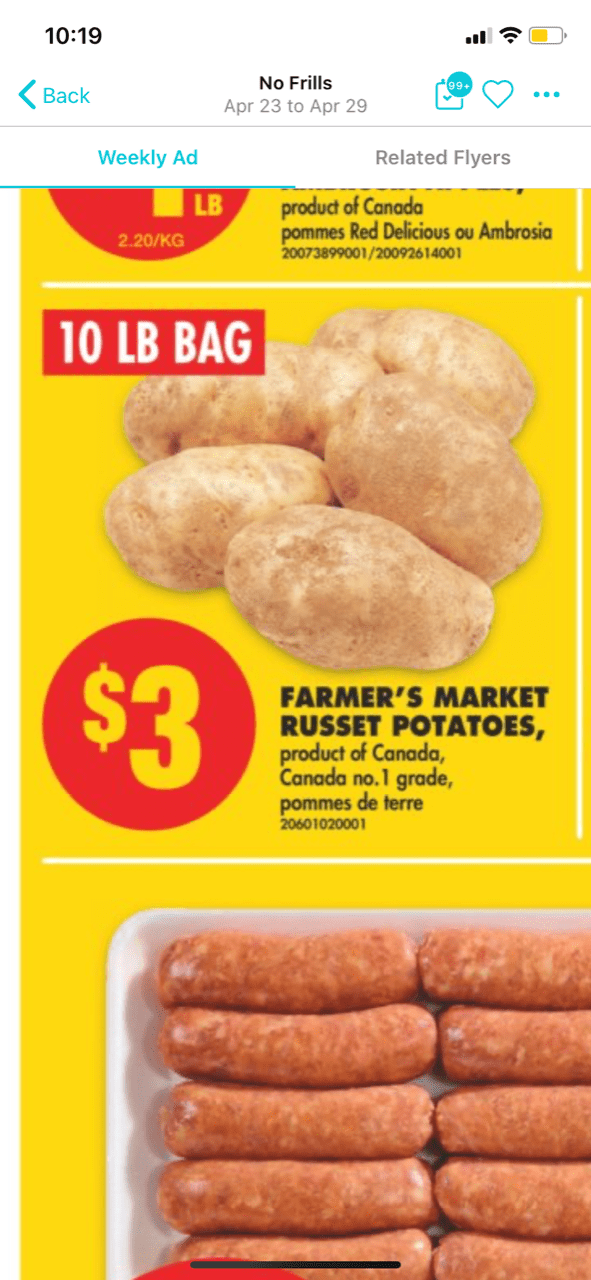
Sweet potatoes are more expensive than white bagged potatoes at $1 a pound (for 2 large sweet potatoes) as seen in my local grocery flyer. This is still a great price. I use the Flipp app to price match. The higher-end grocery in the area sells them for $1.99 a pound. I prefer to opt for the half-priced produce option. Have your dollar go further! This remains an economical option if having sweet potato fries at dinner; they would be especially cheaper compared to buying them at a restaurant.
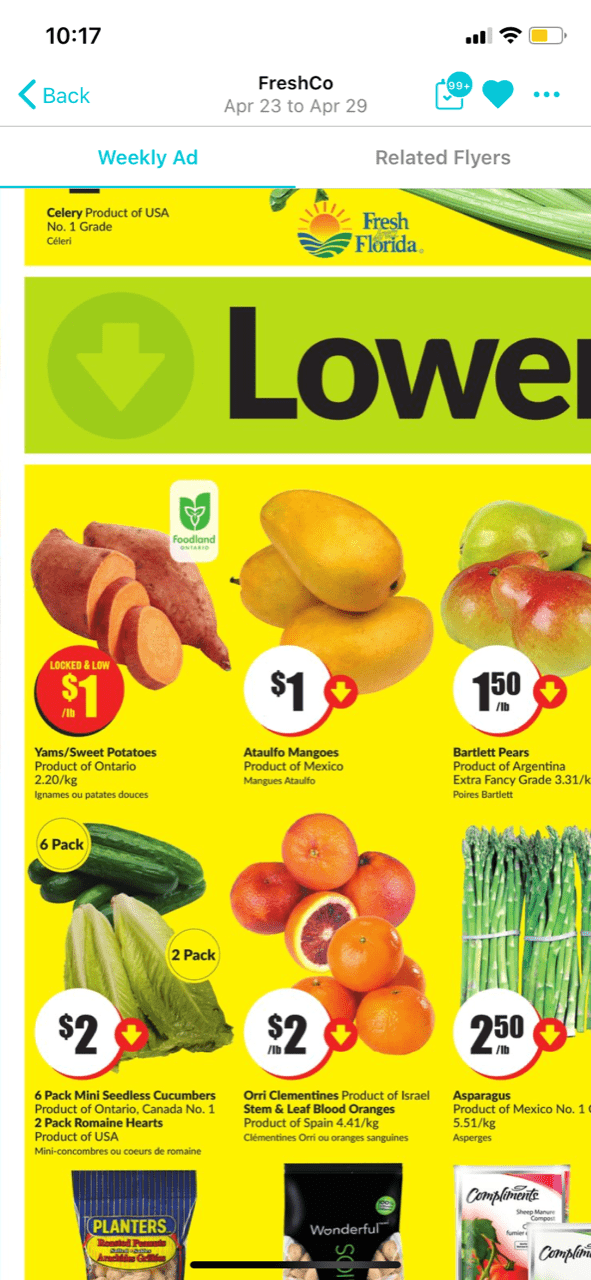
Cheap and Healthy Meals with Potatoes
Potatoes are versatile to include in the diet. Enjoy them baked whole, chopped for roasting, cooked for mashed, added to soups or grated. For maximum freshness, store your potatoes in a cool, dark area.
Crispy Herb Roasted Potatoes
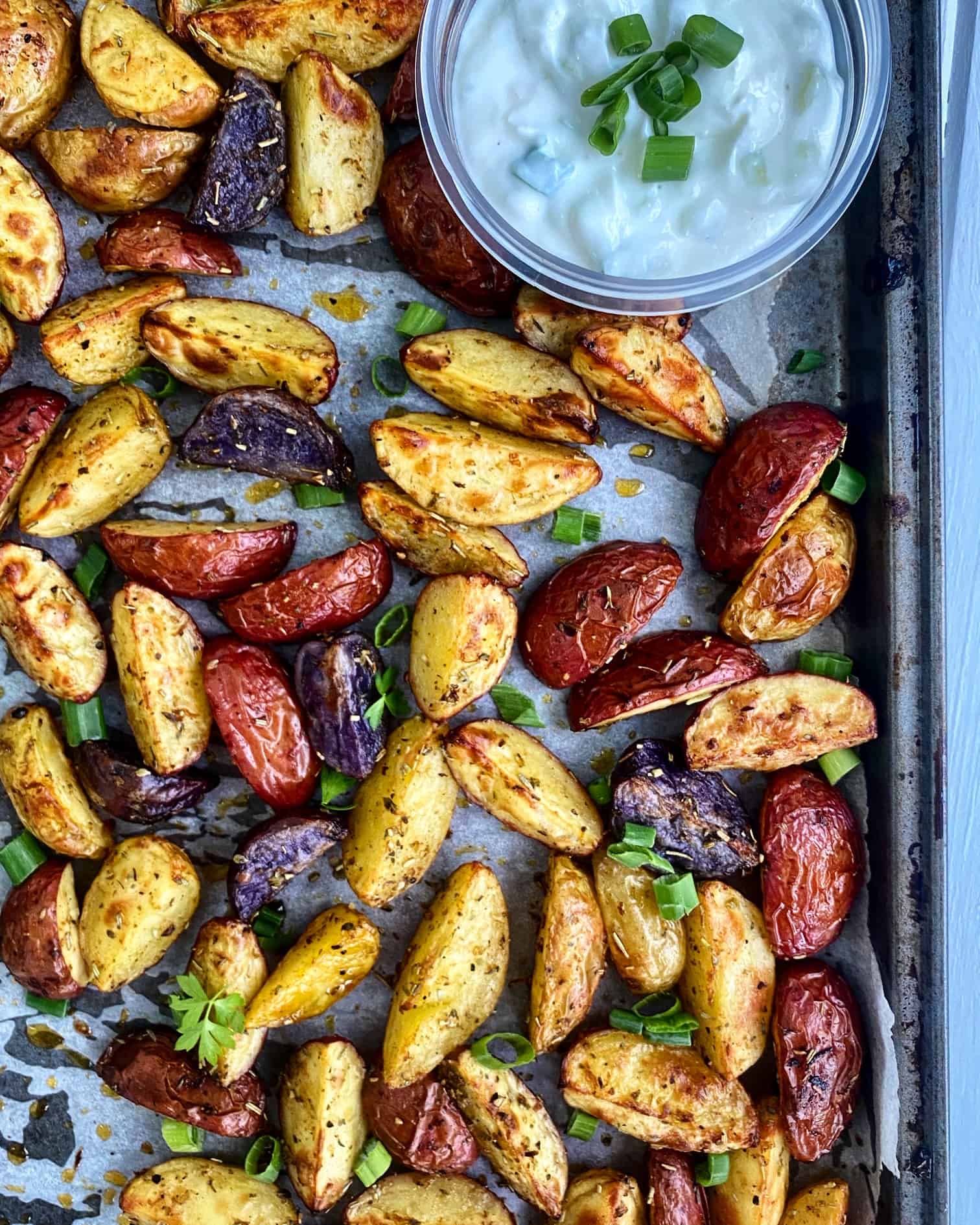
BBQ Sweet Potatoes with Feta
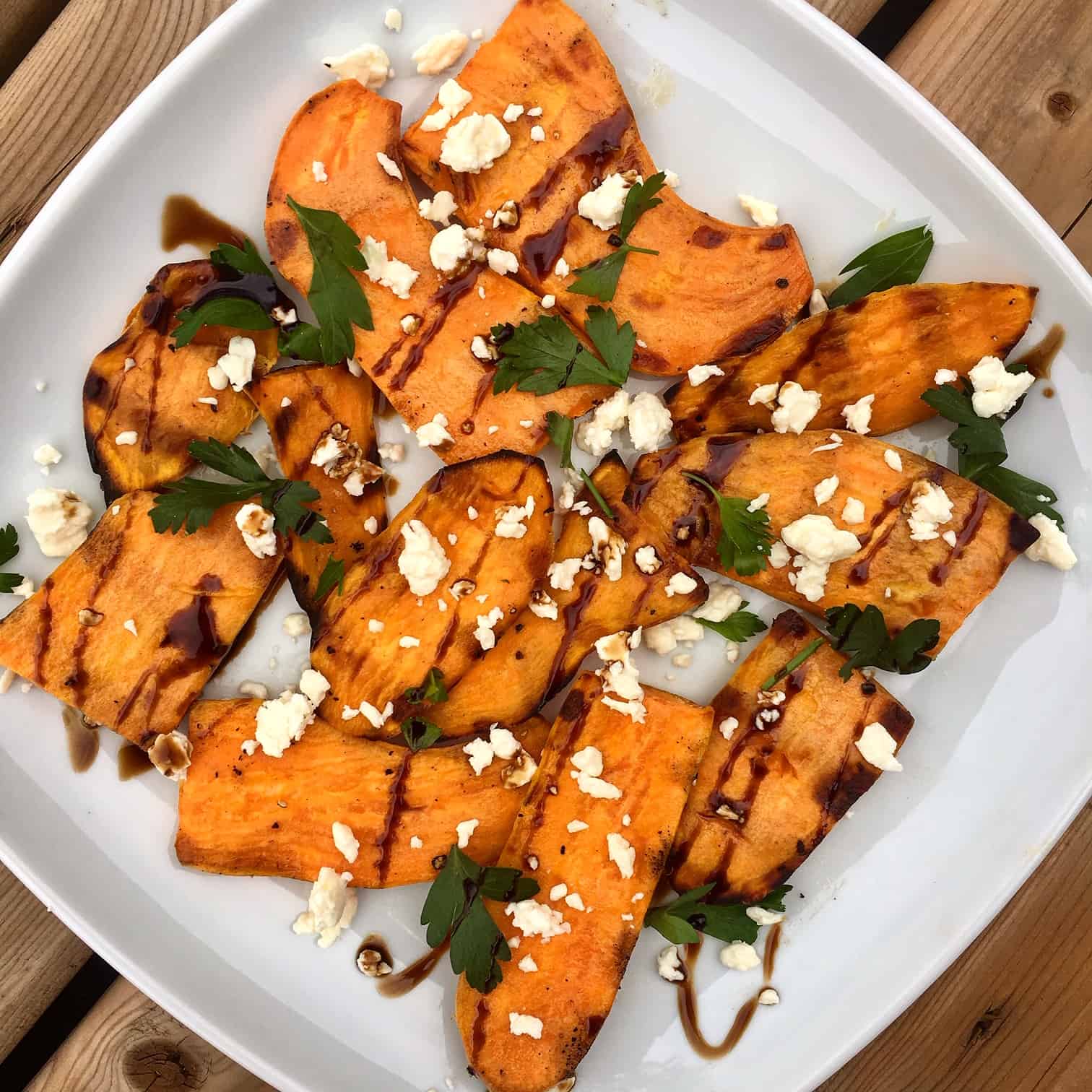
Potato Salad with Egg & Chickpeas {Recipe Redux}

Simple Sweet Potato & Pear Soup
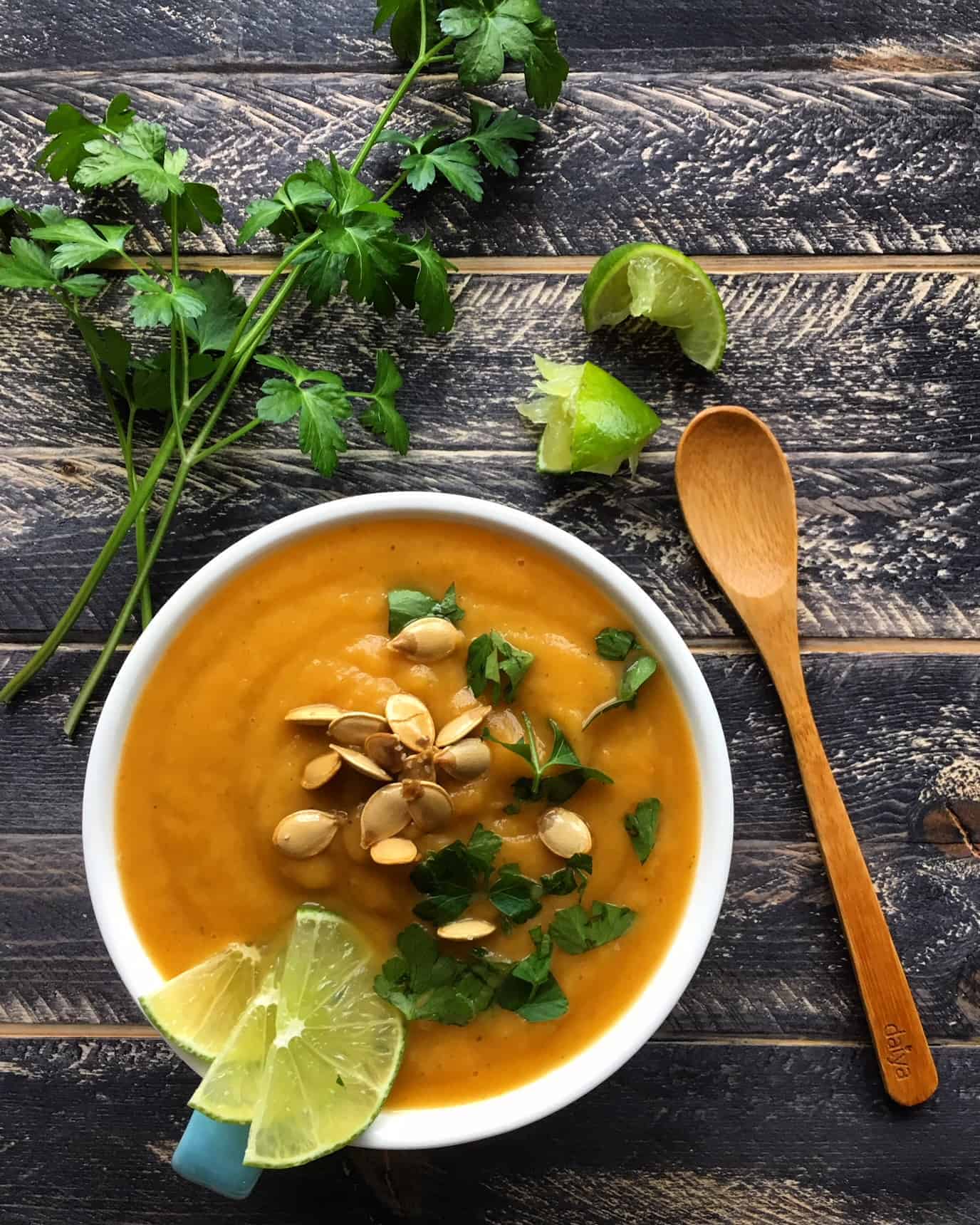
Sheet Pan Thyme Sweet Potatoes + Chicken

Garlic & Rosemary Roasted Red Skinned Potatoes
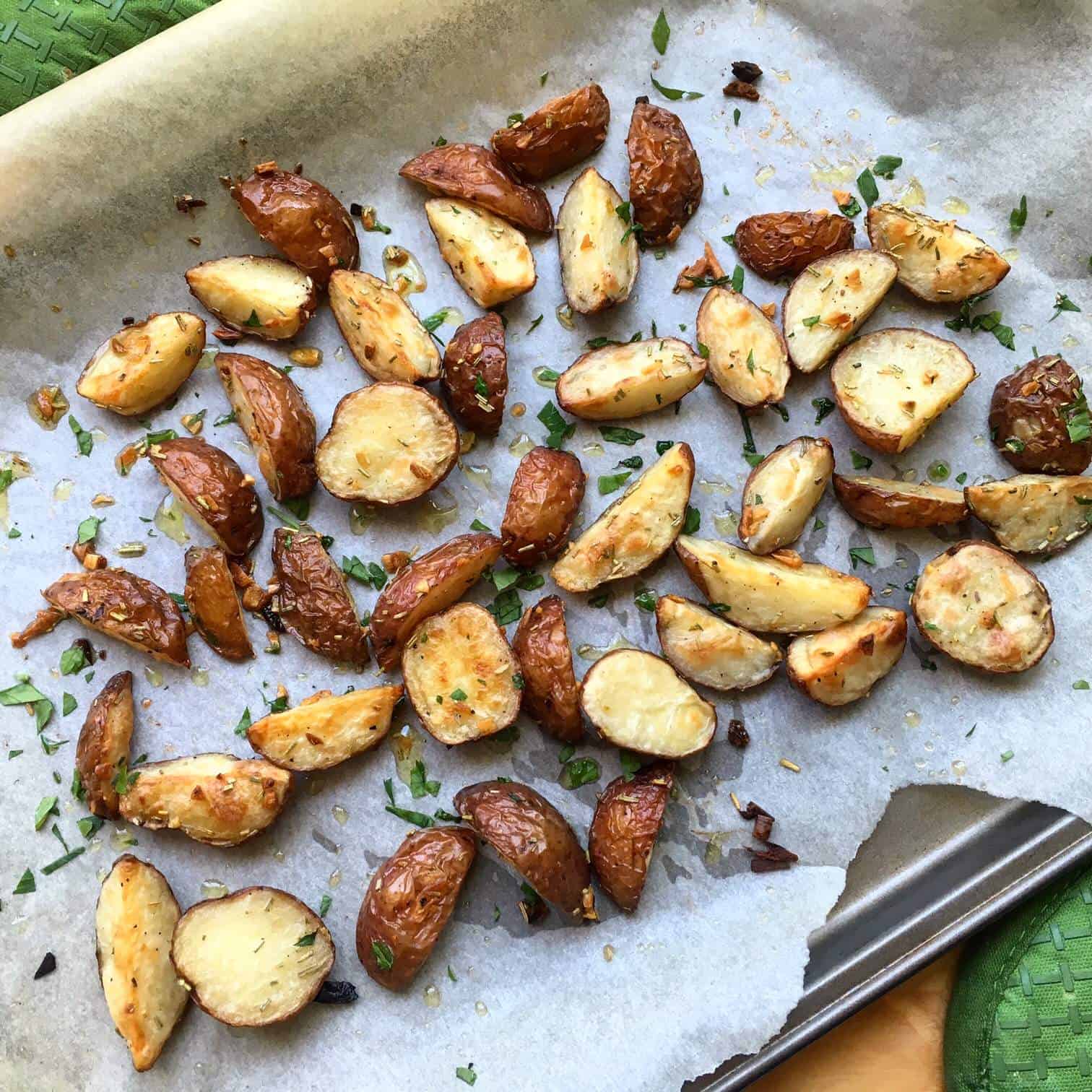
Why are Potatoes Nutritious?
Although potatoes are technically vegetables, they’re starchy, so I would think of them as a “carbohydrate” when planning your meals. This is part of Canada’s New Food Guide balanced plate where we aim to have half our plate filled with vegetables and quarter whole grains (or starchy foods) and quarter protein. To read more about the pros and cons of the newest food guide, click here.
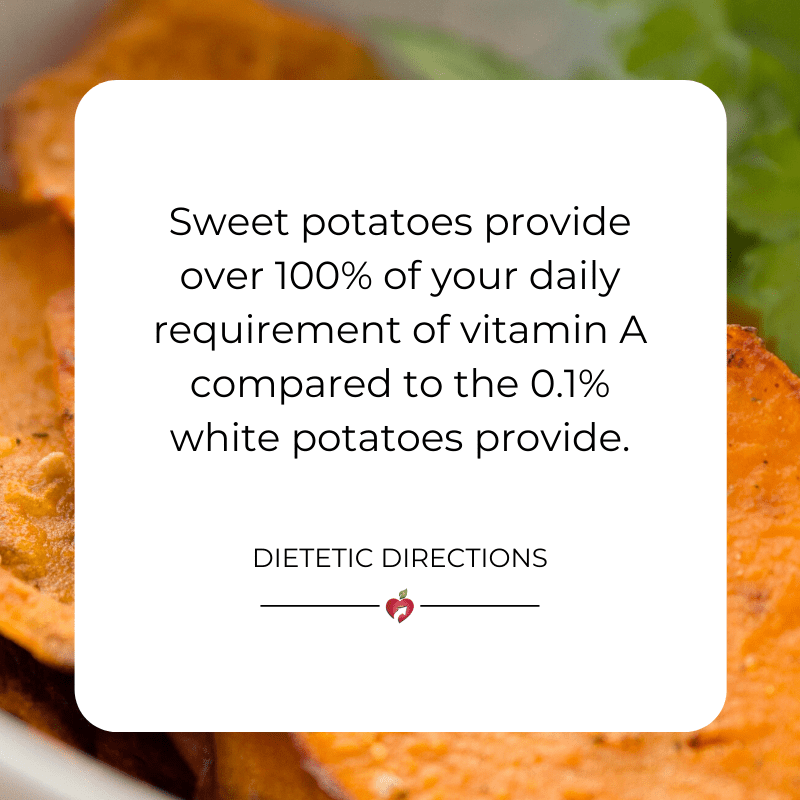
In comparing the white and the sweet potato, they’re almost identical in calories per serving (approximately 90 calories in 100 grams or 3.5 ounces). Furthermore, they have the same carbohydrate content per serving, similar low protein, and of course low-fat content. Sweet potatoes, however, are slightly higher in fiber with 3 grams of fibre per 100 grams versus 2 grams of fibre in a regular potato. Nevertheless, when it comes to vitamin A, which includes the antioxidant beta-carotene, sweet potatoes provide approximately 400% of your daily requirement. However, the regular potato provides more potassium, which is important for heart health, muscles, and bones.
Did you know? Sweet potatoes and yams are not the same things! Curious how they differ? Find out here.
4. Eggs
When it comes to cheap sources of protein, you really can’t beat eggs. Loaded with 6 grams of protein per egg (half of that protein is in the yolk) as well as 14 key nutrients. Interestingly, eggs go from farm to grocery store in 4 to 7 days in Ontario. Eggs also have a great shelf-life of 3 to 5 weeks in the fridge. When cooking cheap meals, eggs are a must! Can also include eggs as part of a weeknight “Meal Theme” – like breakfast for dinner or cooking with eggs (see past post on my 15 favourite meal themes).
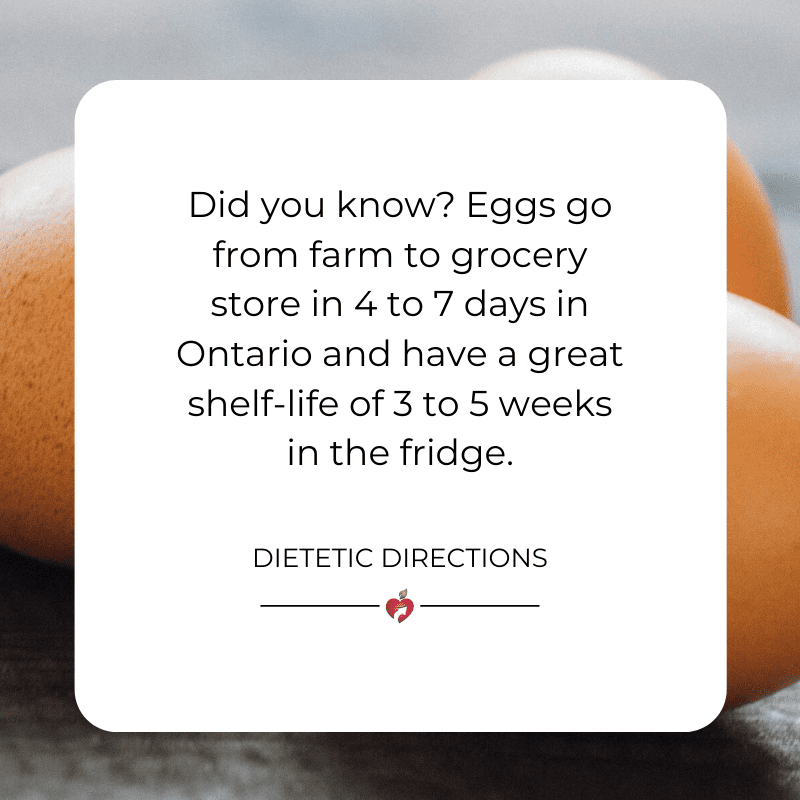
Budget-Friendly?
When it comes to eggs, the cost has remained stable and not been impacted much by inflation. In fact, the average retail price for a dozen eggs (12 eggs) in Canada was $3.37 in December 2019. Checking the Flipp app for the best price in my geographic area, I see a dozen eggs for $2.69. Can’t beat that! There are also different types of eggs at the store – from omega-3 eggs to free-run, etc. The cost of these specialty eggs will of course differ and the cost of packaging also impacts the price (cardboard egg containers are cheaper to produce).
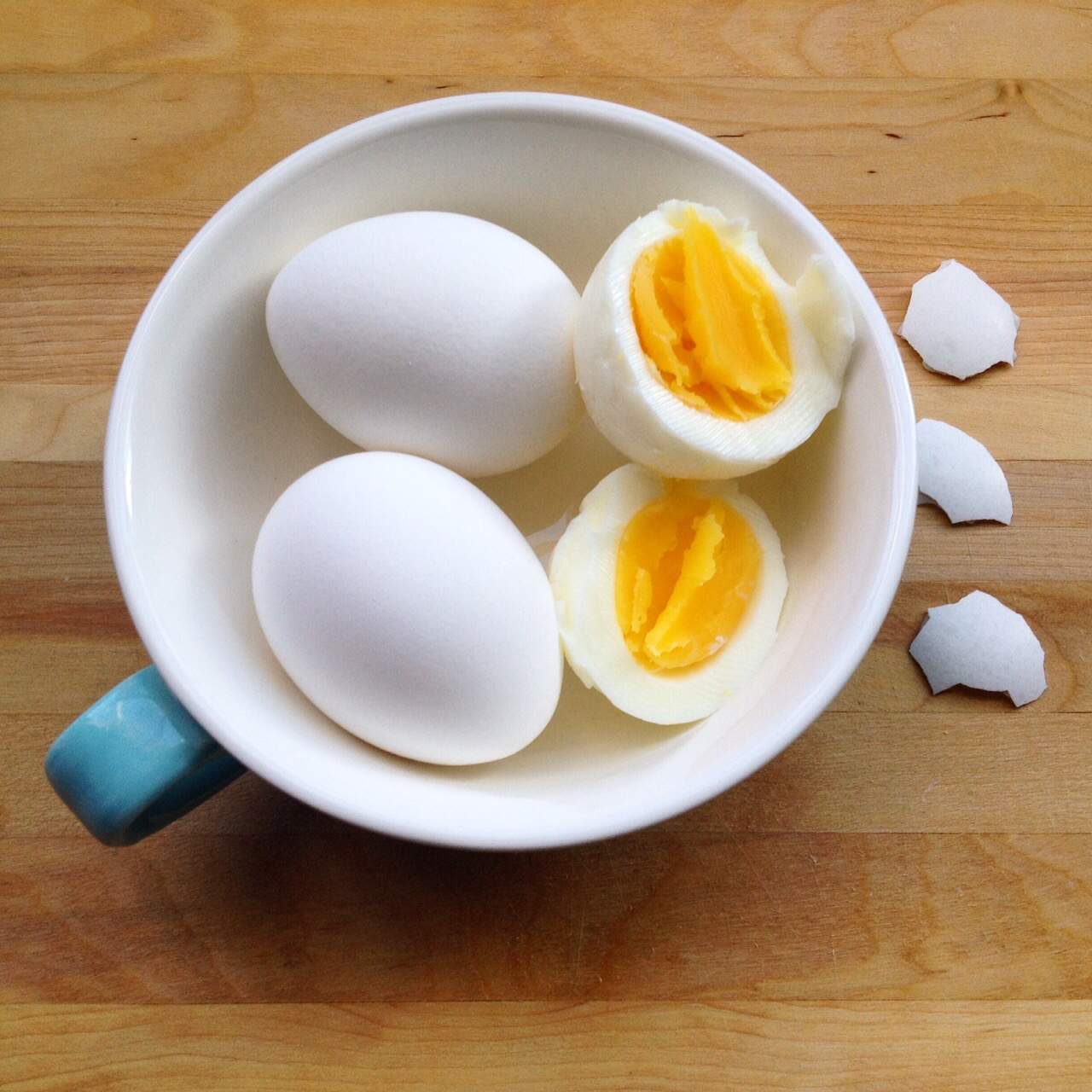
Cost Saving Tip: Buy eggs in bulk and split with a family member or friends. Extra eggs? Be sure to hard-cook a bunch as they last for 7 days in the fridge.
Cheap and Healthy Meals with Eggs
Mini Egg Muffins

Classic French Toast
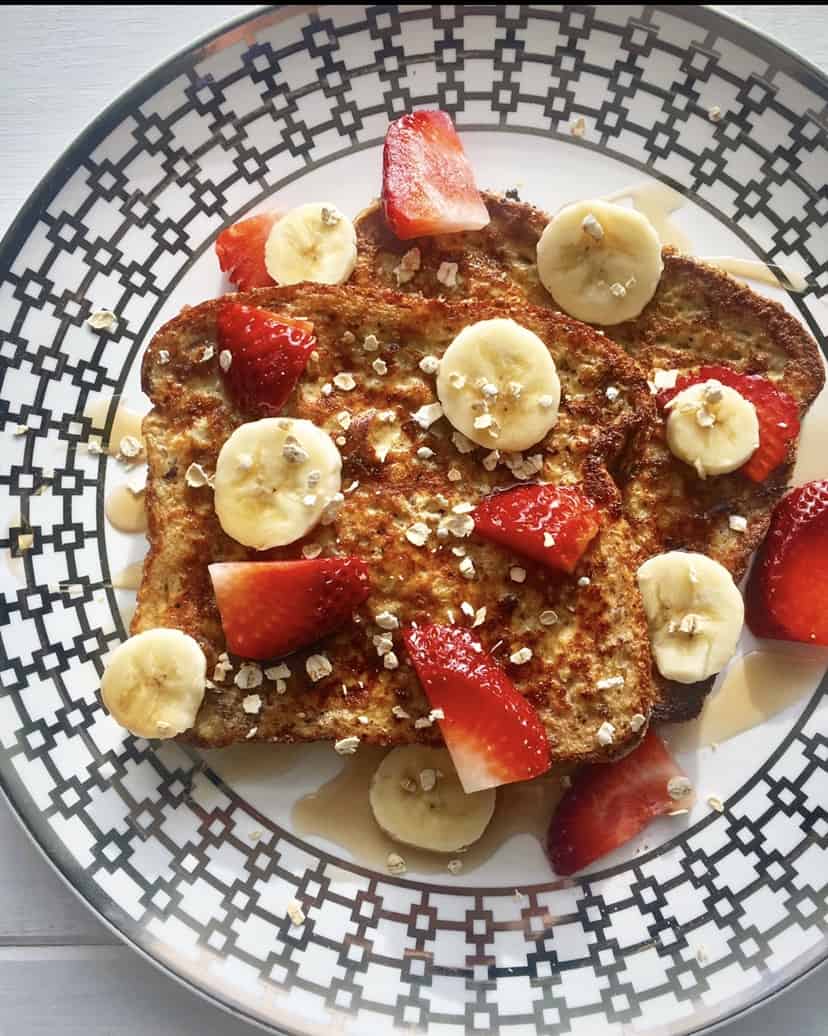
Divine Deviled Eggs

Zesty Avocado Toast with Eggs

Curry Egg Salad with Apples, Walnuts & Craisins

Spring Fresh Egg Drop Soup
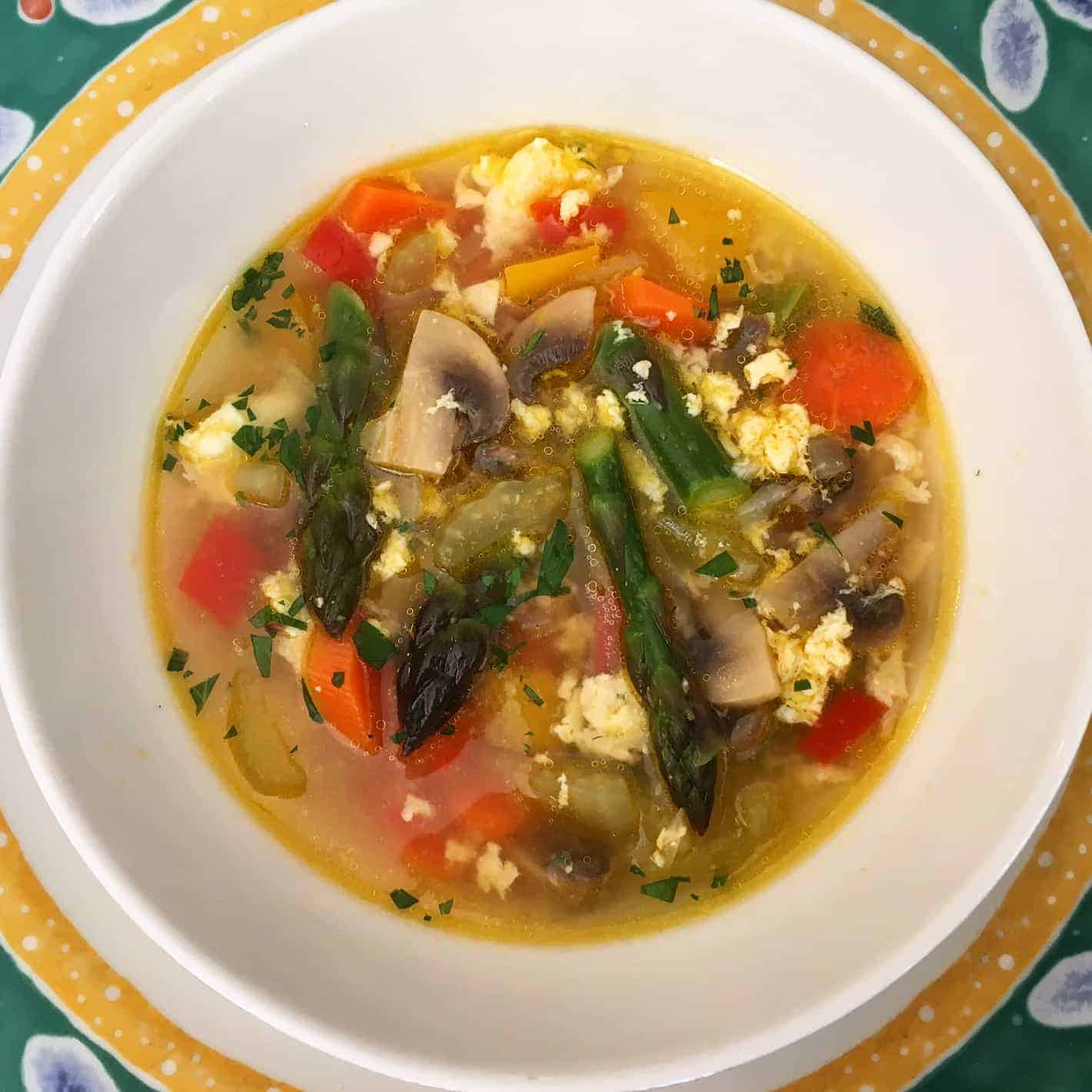
Why are Eggs Nutritious?
Not only are eggs a source of protein, but they are also a source of essential vitamins and minerals such as choline for brain health and lutein for heart health. Eggs have been debunked for the bad reputation on cholesterol with the American Heart Association noting that one egg daily (213 mg of cholesterol) can fit the dietary cholesterol recommendations. Additionally, the Heart and Stroke Foundation of Canada does not recommend a specific cholesterol intake for healthy people but rather stresses the importance of limiting saturated and trans fats to help control blood cholesterol.

5. Canned Tomatoes
Canned tomatoes are a cheap, versatile pantry staple! When budget-meal planning, choosing canned tomatoes allows you to reap the nutrition benefits without relying on in-season produce or expensive imported tomatoes. Cooking with canned tomatoes may intimidate some; however, I have selected cheap, healthy meals below that are simple for beginners and can advance with more kitchen confidence.

Budget-Friendly?
A 796 mL can of tomatoes is roughly a dollar! You can also buy the 680 mL glass jars of strained tomatoes for approximately the same price (love these for tomato sauce). Choose your type of tomato such as: diced, crushed, pureed, no salt added, or spiced. When cost saving, I still buy fresh items (love fresh cherry tomatoes) but do not prepare a homemade sauce because fresh tomatoes cost about three times as much. Instead, I use canned tomatoes and may even add some fresh tomatoes (often I don’t). Apart from this, I bump up the flavour with fresh garlic, onion cooked in olive oil.
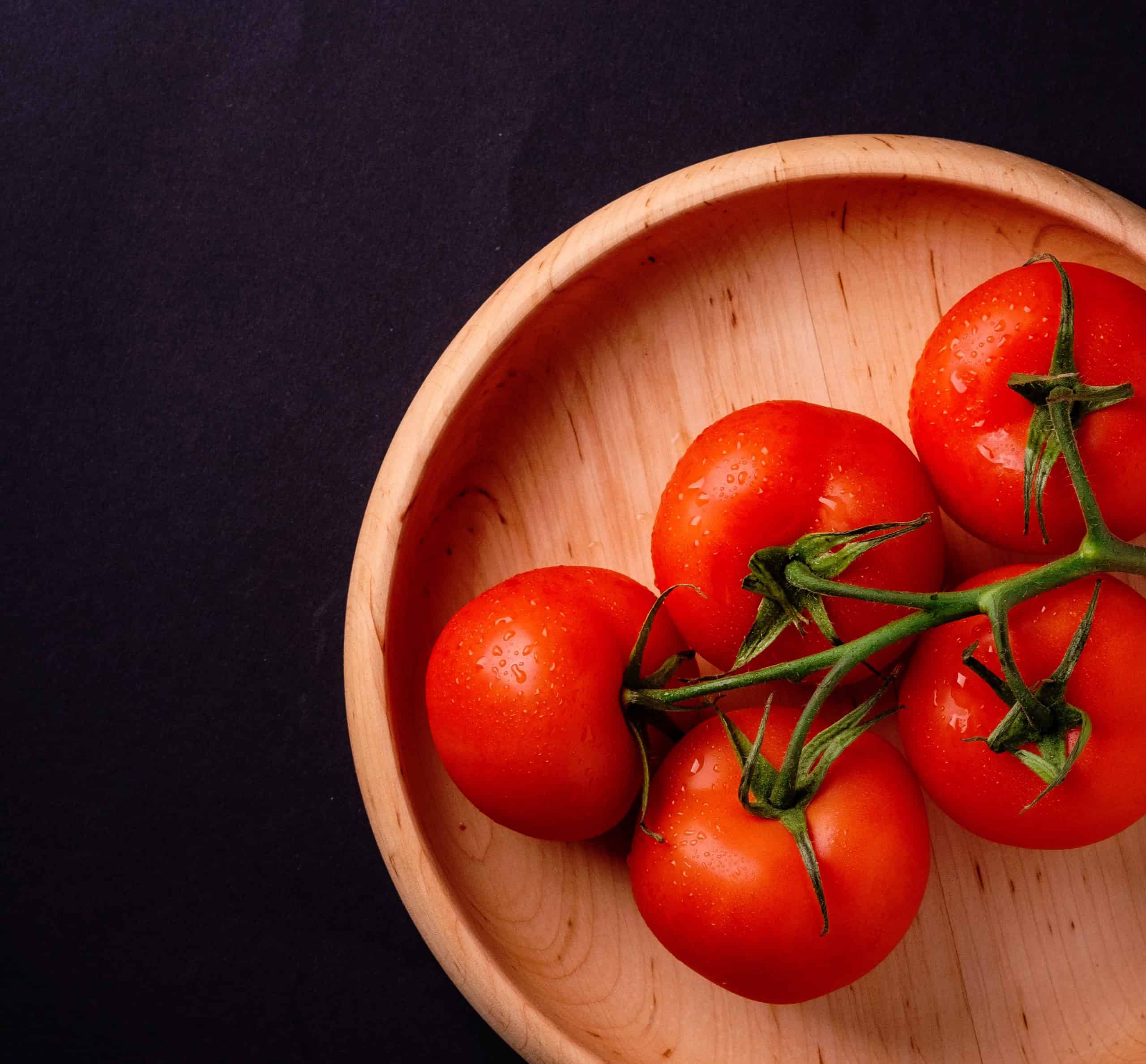
Cheap and Healthy Meals with Canned Tomatoes
I love canned tomatoes for a huge cost and time saver to add to homemade sauces, chilis, soups, rice dishes or casseroles. Bonus – they keep in the pantry for up to 18 months.
Homemade Tomato Sauce

Savoury Pumpkin Chili
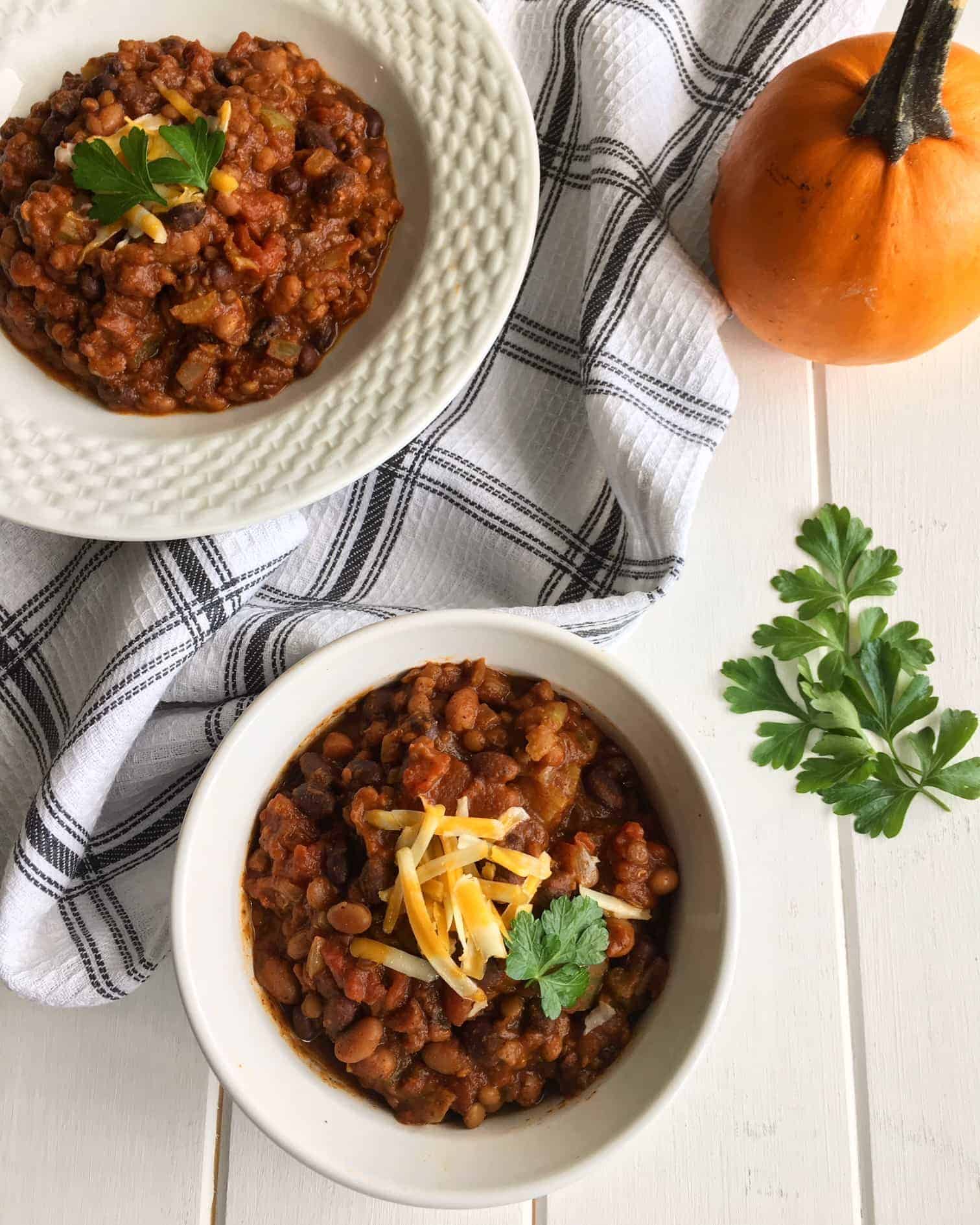
Spicy Chana Masala
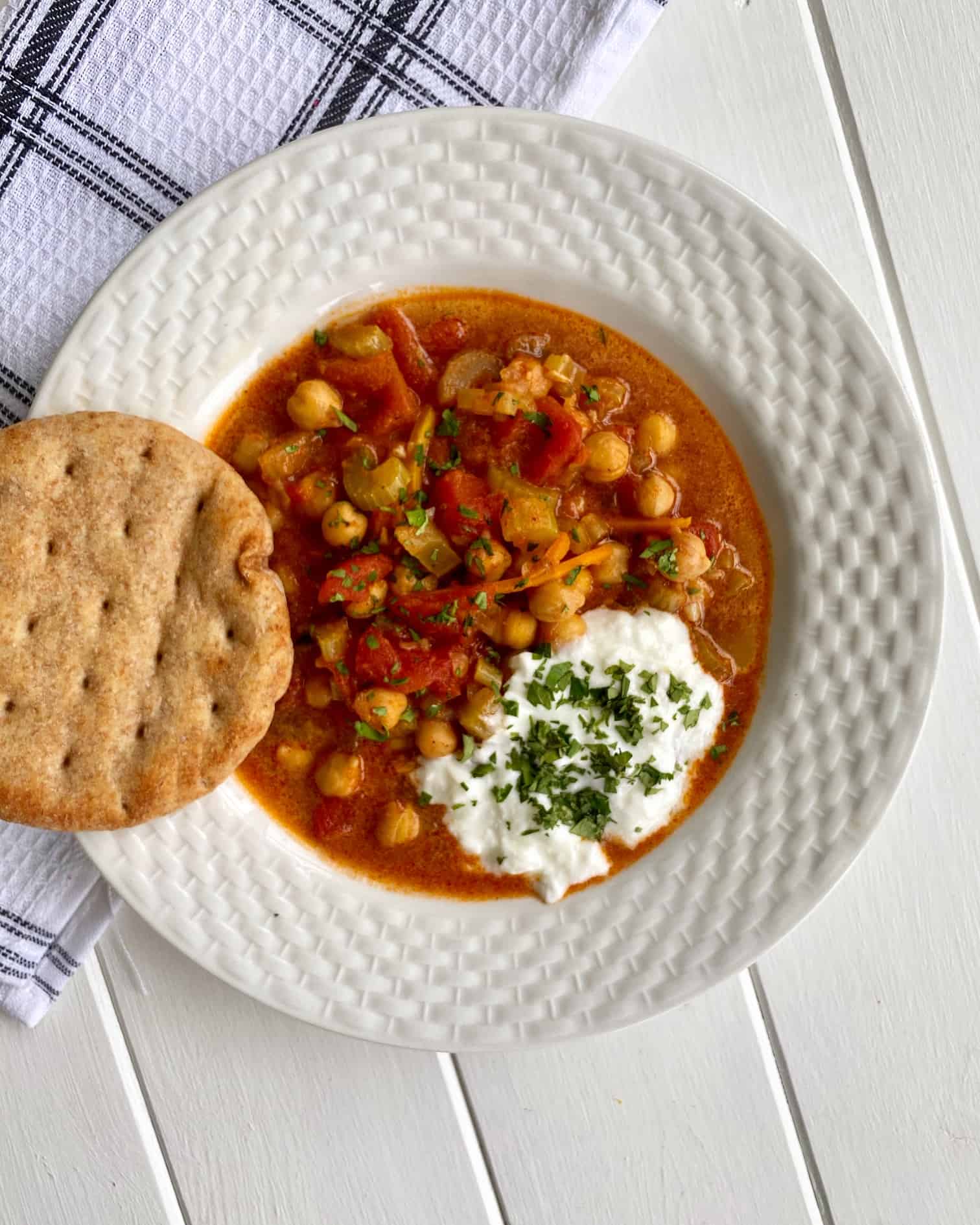
Spicy Sausage Penne
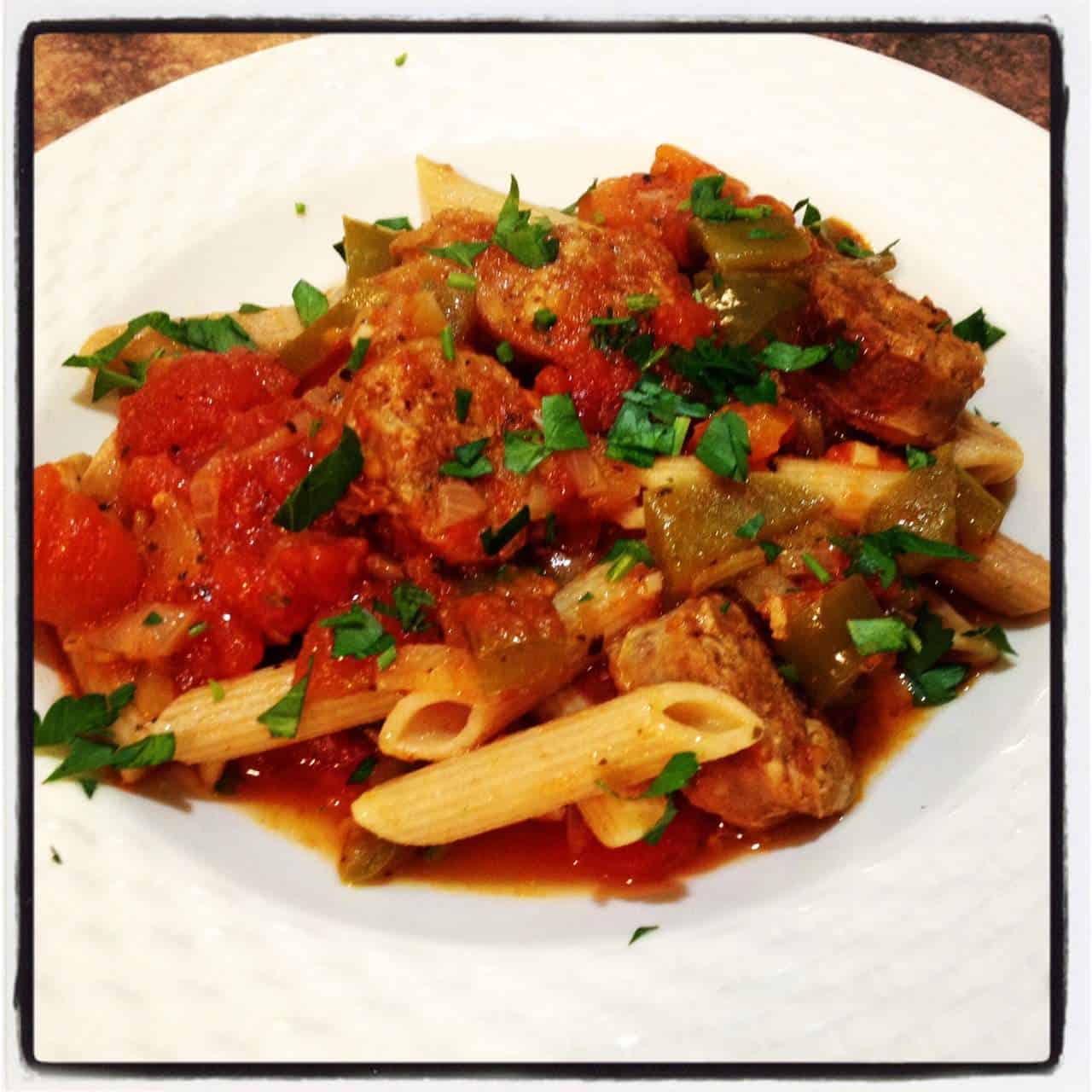
Homemade Tomato Sauce

Why are Tomatoes Nutritious?
Canned tomatoes are a nutritious option when it comes to vegetables! They’re low in calories with comparable fibre, potassium and iron to fresh tomatoes. Interestingly, canned tomatoes have higher lycopene than fresh because cooking increases absorption by the body. Because lycopene is fat-soluble, enjoying tomatoes with oil-rich dishes such as pasta sauce or pizza helps with absorbing this antioxidant. However, the amount of vitamin C and beta-carotene tends to decrease slightly with the sterilization process in canning.
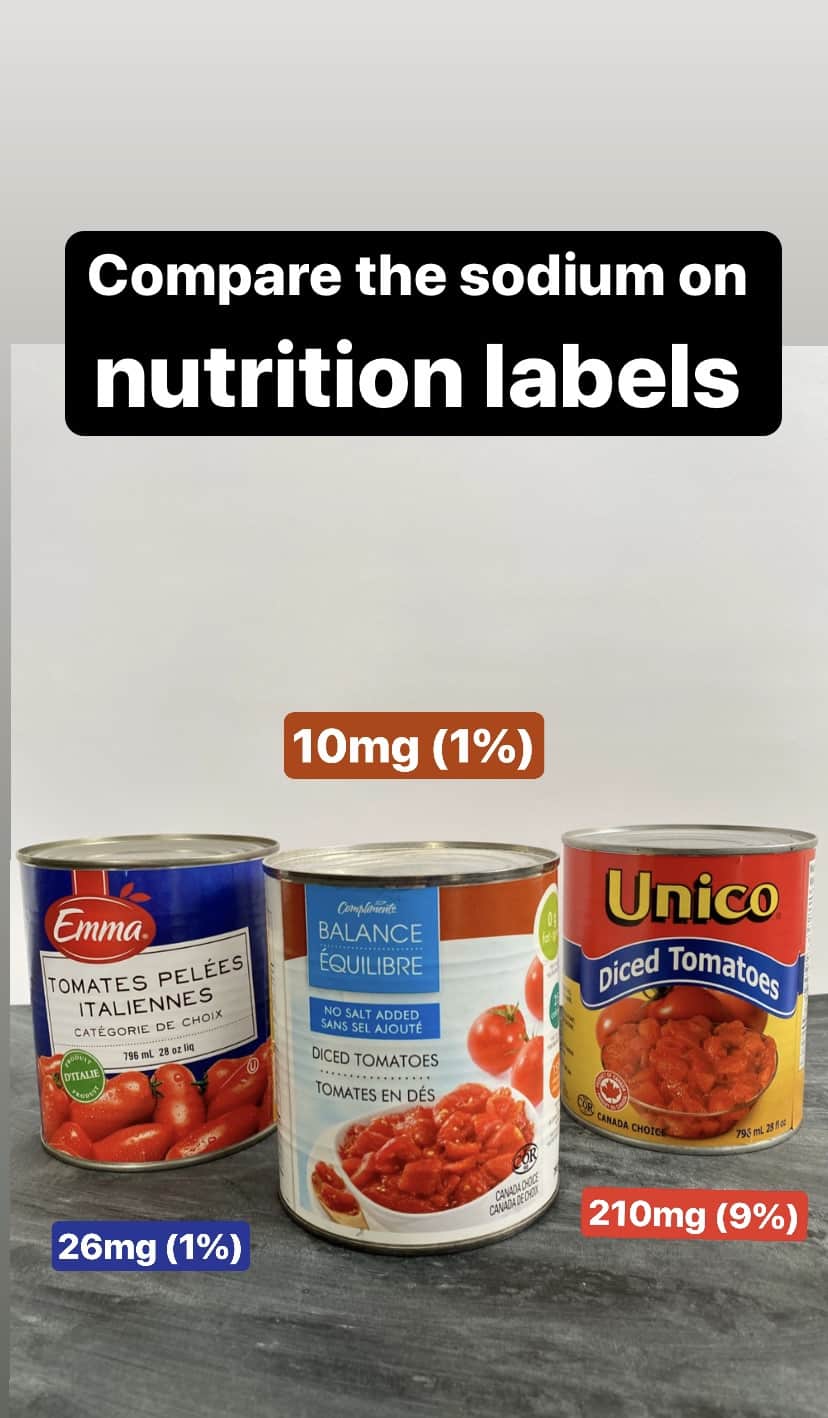
Be sure to compare nutrition labels for the amount of salt in canned tomatoes. In my pantry, I have three different cans of tomatoes. For a ½ cup serving size there’s one with 210 mg sodium (9% Daily Value) another No Salt Added can with only 10 mg (1% Daily Value) of salt. What a difference! Without a doubt, it pays to check the label. I much prefer adding salt during my cooking so I can choose the amount.
Check salt on your canned goods! Opt for options with less than 5% daily value (%DV) of salt.
Bottom Line on Cheap and Healthy Meals:
Without hesitation, it is possible to enjoy cheap, healthy meals! Utilizing key nutritious ingredients – like lentils, milk, potatoes, eggs and canned tomatoes – can help create delicious cheap, healthy meals. Additionally, to save money and extend your food budget, be sure to cut down on food waste. This means using ingredients before they go bad and meal planning so you know exactly what to buy at the grocery store. Consequently, you’re not throwing out food (or money). Lastly, be sure to use flexible recipes that allow you to use leftover veggies to make a chili, a soup, a stir-fry, a quiche, etc.

Wishing you happy savings! We hope this was a helpful post. Finally, it’s your turn! What are your favourite cheap and healthy meals?




